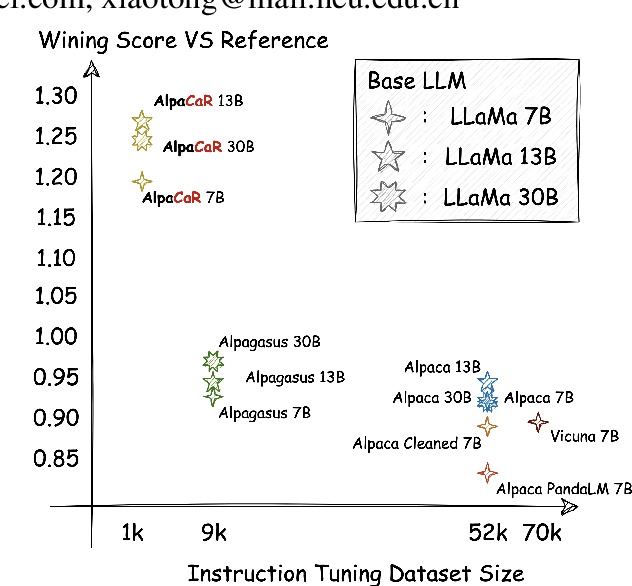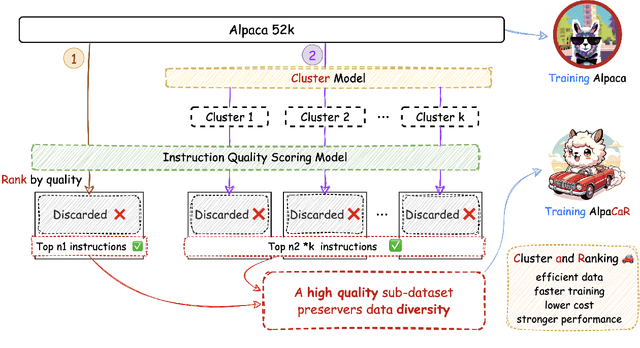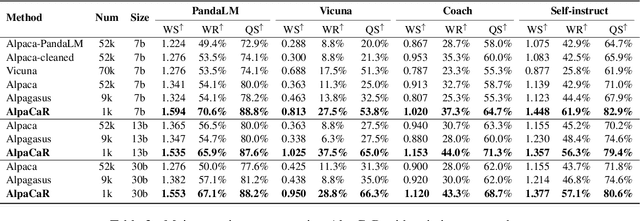Yuan Ge
A Modular-based Strategy for Mitigating Gradient Conflicts in Simultaneous Speech Translation
Sep 24, 2024



Abstract:Simultaneous Speech Translation (SimulST) involves generating target language text while continuously processing streaming speech input, presenting significant real-time challenges. Multi-task learning is often employed to enhance SimulST performance but introduces optimization conflicts between primary and auxiliary tasks, potentially compromising overall efficiency. The existing model-level conflict resolution methods are not well-suited for this task which exacerbates inefficiencies and leads to high GPU memory consumption. To address these challenges, we propose a Modular Gradient Conflict Mitigation (MGCM) strategy that detects conflicts at a finer-grained modular level and resolves them utilizing gradient projection. Experimental results demonstrate that MGCM significantly improves SimulST performance, particularly under medium and high latency conditions, achieving a 0.68 BLEU score gain in offline tasks. Additionally, MGCM reduces GPU memory consumption by over 95\% compared to other conflict mitigation methods, establishing it as a robust solution for SimulST tasks.
NDP: Next Distribution Prediction as a More Broad Target
Aug 30, 2024



Abstract:Large language models (LLMs) trained on next-token prediction (NTP) paradigm have demonstrated powerful capabilities. However, the existing NTP paradigm contains several limitations, particularly related to planned task complications and error propagation during inference. In our work, we extend the critique of NTP, highlighting its limitation also due to training with a narrow objective: the prediction of a sub-optimal one-hot distribution. To support this critique, we conducted a pre-experiment treating the output distribution from powerful LLMs as efficient world data compression. By evaluating the similarity between the $n$-gram distribution and the one-hot distribution with LLMs, we observed that the $n$-gram distributions align more closely with the output distribution of LLMs. Based on this insight, we introduce Next Distribution Prediction (NDP), which uses $n$-gram distributions to replace the one-hot targets, enhancing learning without extra online training time. We conducted experiments across translation, general task, language transfer, and medical domain adaptation. Compared to NTP, NDP can achieve up to +2.97 COMET improvement in translation tasks, +0.61 average improvement in general tasks, and incredible +10.75 average improvement in the medical domain. This demonstrates the concrete benefits of addressing the target narrowing problem, pointing to a new direction for future work on improving NTP.
RankPrompt: Step-by-Step Comparisons Make Language Models Better Reasoners
Mar 22, 2024



Abstract:Large Language Models (LLMs) have achieved impressive performance across various reasoning tasks. However, even state-of-the-art LLMs such as ChatGPT are prone to logical errors during their reasoning processes. Existing solutions, such as deploying task-specific verifiers or voting over multiple reasoning paths, either require extensive human annotations or fail in scenarios with inconsistent responses. To address these challenges, we introduce RankPrompt, a new prompting method that enables LLMs to self-rank their responses without additional resources. RankPrompt breaks down the ranking problem into a series of comparisons among diverse responses, leveraging the inherent capabilities of LLMs to generate chains of comparison as contextual exemplars. Our experiments across 11 arithmetic and commonsense reasoning tasks show that RankPrompt significantly enhances the reasoning performance of ChatGPT and GPT-4, with improvements of up to 13%. Moreover, RankPrompt excels in LLM-based automatic evaluations for open-ended tasks, aligning with human judgments 74% of the time in the AlpacaEval dataset. It also exhibits robustness to variations in response order and consistency. Collectively, our results validate RankPrompt as an effective method for eliciting high-quality feedback from language models.
Clustering and Ranking: Diversity-preserved Instruction Selection through Expert-aligned Quality Estimation
Feb 28, 2024



Abstract:With contributions from the open-source community, a vast amount of instruction tuning (IT) data has emerged. Given the significant resource allocation required by training and evaluating models, it is advantageous to have an efficient method for selecting high-quality IT data. However, existing methods for instruction data selection have limitations such as relying on fragile external APIs, being affected by biases in GPT models, or reducing the diversity of the selected instruction dataset. In this paper, we propose an industrial-friendly, expert-aligned and diversity-preserved instruction data selection method: Clustering and Ranking (CaR). CaR consists of two steps. The first step involves ranking instruction pairs using a scoring model that is well aligned with expert preferences (achieving an accuracy of 84.25%). The second step involves preserving dataset diversity through a clustering process.In our experiment, CaR selected a subset containing only 1.96% of Alpaca's IT data, yet the underlying AlpaCaR model trained on this subset outperforms Alpaca by an average of 32.1% in GPT-4 evaluations. Furthermore, our method utilizes small models (355M parameters) and requires only 11.2% of the monetary cost compared to existing methods, making it easily deployable in industrial scenarios.
 Add to Chrome
Add to Chrome Add to Firefox
Add to Firefox Add to Edge
Add to Edge